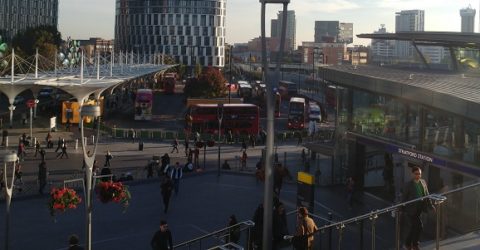How densely populated is the UK?
The question of how densely populated is the UK takes on particular significance when it comes to broadband availability

We rarely stop to consider how significant population density is, or how much it matters in terms of infrastructure development.
Residents of Camden or Lozells may assume tower blocks and urban sprawl are ubiquitous, whereas residents of Campbeltown and Larne have a very different outlook – literally and metaphorically.
And while you might not think it makes much difference to daily life, population density is a crucial factor in determining access to broadband services.
Hyperlocal infrastructure companies have popped up around the UK, laying proprietary cable systems in new housing estates – in urban areas.
That’s because the greater population density of towns and cities makes this cost-effective. One high-rise building can house a hundred people, so one cable can support dozens of customer connections.
Conversely, an isolated cottage is completely cost-ineffective as a destination for fibre cabling.
So how densely populated is the UK? And what can we learn about how this affects broadband availability?
So dense, light bends around it
The UK’s official population density figure is 712 people per square mile.
That makes us the third most densely-populated country in Europe, though these figures pale in comparison to those for Hong Kong (16,310 per square mile) or Monaco (68,186).
Closely-packed populations make it easy to pipe high-speed broadband into numerous homes at once – particularly tower blocks containing multiple private dwellings.
The crowded metropolis of Singapore (whose population density stands at 21,638 people per square mile) has the world’s fastest broadband, with average download speeds of over 180Mbps.
Conversely, Australia’s scattered population (where one farm can cover over nine thousand square miles) has seen it appearing near the bottom of global broadband speed league tables.
Town and country
It’s no coincidence residents of urban British regions often have a choice of high-speed internet from Openreach and dedicated cable firms, while rural residents struggle on with ADSL.
Indeed, the question of how densely populated is the UK is rather misleading, since it disguises enormous regional variations.
In London, population density stands at 14,589 people per square mile. In the Scottish Highlands, it’s 21. And even that figure is boosted by the City of Inverness, which is home to 46,870 people.
On parts of the NC500 route, you can drive for miles without seeing a single dwelling in any direction.
Laying fibre broadband to Badcall would indeed be a bad call for cable firms, who would never recoup their overheads from the handful of cottages located in this isolated hamlet.
Little wonder cable companies are focusing all their energies on larger towns and cities – typically new-build estates where cabling can be installed quickly and affordably.
This mixed picture is likely to be exacerbated in coming years, though the introduction of 5G data services across a range of low and high frequencies should help.
Alongside more affordable satellite broadband with reduced levels of latency, data speeds ought to become more egalitarian in coming years.






